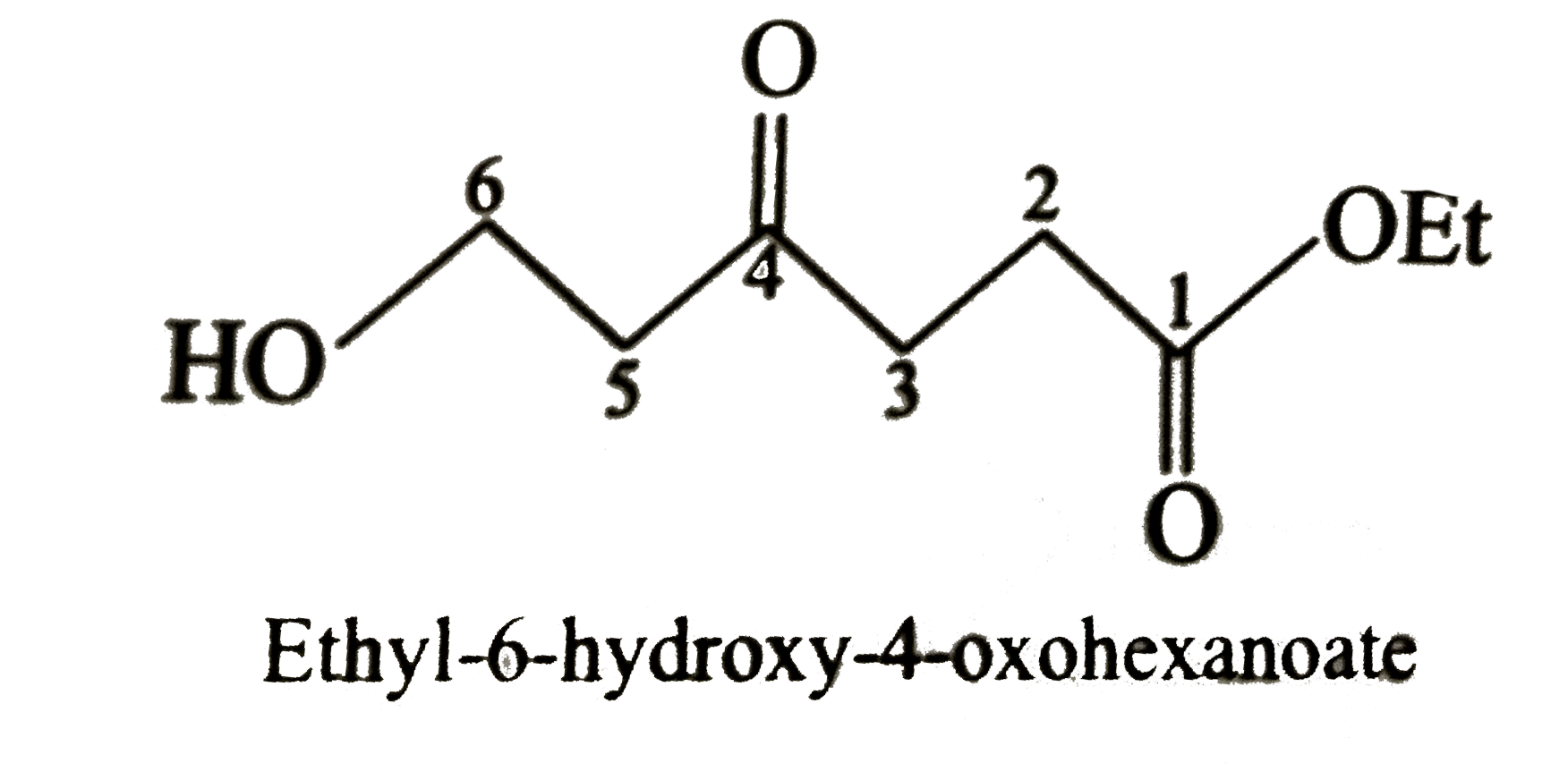Identify A, B, C , -------- in the following.
HC≡CHMeMgBr−−−−→A↑⏐
⏐
⏐⏐+B,B1.cyclopentanone−−−−−−−−−−→2.H3O+C
To solve the problem step by step, we need to identify the compounds A, B, and C based on the given reactions.
Step 1: Identify Compound A
The reaction starts with HC≡CH (ethyne) and reacts with MeMgBr (methylmagnesium bromide).
- Reaction:
HC≡CH+MeMgBr→C2H3MgBr+CH4
In this reaction, the methyl group from MeMgBr acts as a base and abstracts a proton (H) from the alkyne (HC≡CH), resulting in the formation of methane (CH₄) as a gas.
- Conclusion:
- A = CH₄ (methane)
Step 2: Identify Compound B
After the reaction, we are left with C≡C-MgBr (the alkyne now bonded to magnesium bromide).
- Conclusion:
- B = HC≡C-MgBr
Step 3: Identify Compound C
Next, we take B (HC≡C-MgBr) and react it with cyclopentanone.
- Reaction:
HC≡C−MgBr+cyclopentanone→nucleophilic attack
The nucleophile (HC≡C-) attacks the carbonyl carbon of cyclopentanone, leading to the formation of a new compound. The oxygen in the carbonyl will then be protonated in the next step.
- Intermediate:
The product of the nucleophilic attack will be a compound with a five-membered ring and a new carbon-carbon bond.
Step 4: Hydrolysis of the Intermediate
After the nucleophilic addition, we perform hydrolysis (using 2.H₂O⁺). This will convert the magnesium bromide complex into an alcohol.
- Final Product:
Resulting compound=HC≡C−CH(OH)−C4H8
- Conclusion:
- C = HC≡C-CH(OH)-C₄H₈ (where the alkyne is now attached to the cyclopentanol structure)
Summary of Identifications:
- A = CH₄ (methane)
- B = HC≡C-MgBr
- C = HC≡C-CH(OH)-C₄H₈
The reaction starts with HC≡CH (ethyne) and reacts with MeMgBr (methylmagnesium bromide).
HC≡CH+MeMgBr→C2H3MgBr+CH4
In this reaction, the methyl group from MeMgBr acts as a base and abstracts a proton (H) from the alkyne (HC≡CH), resulting in the formation of methane (CH₄) as a gas.
- A = CH₄ (methane)
After the reaction, we are left with C≡C-MgBr (the alkyne now bonded to magnesium bromide).
- B = HC≡C-MgBr
Next, we take B (HC≡C-MgBr) and react it with cyclopentanone.
HC≡C−MgBr+cyclopentanone→nucleophilic attack
The nucleophile (HC≡C-) attacks the carbonyl carbon of cyclopentanone, leading to the formation of a new compound. The oxygen in the carbonyl will then be protonated in the next step.
The product of the nucleophilic attack will be a compound with a five-membered ring and a new carbon-carbon bond.
After the nucleophilic addition, we perform hydrolysis (using 2.H₂O⁺). This will convert the magnesium bromide complex into an alcohol.
Resulting compound=HC≡C−CH(OH)−C4H8
- C = HC≡C-CH(OH)-C₄H₈ (where the alkyne is now attached to the cyclopentanol structure)
- A = CH₄ (methane)
- B = HC≡C-MgBr
- C = HC≡C-CH(OH)-C₄H₈
Similar Questions
Knowledge Check
Identify (B) and (D) in the following sequence of reactions:
H2C=CH2conc.H2SO4−−−−−−−→(A)H2O−−→Δ(B)PB3−−→(C)(D)−−→(H2C=CH2)ACH3OH and C2H5BrBC2H5HSO4 and alc. KOHCC2H5OH and alc. KOHDC2H5HSO4 and aq. KOHIdentify C in the following reactions :
CH3−CH=CH2HBr−−→AKOH(alc.)−−−−−→BHBr−−−−−→H2O2CACH3CH=CH2BCH3CH2CH2BrCCH3CH2CH2OHDCH3C∣COOHHCH3Consider the following sequence of reactions
C2H5C≡CHCH3MgBr−−−−−→A(1)HCHO−−−−−−→(2)H2O+B
The product (B) isAC2H5C≡C−OH∣CH−CH3BC2H5C≡C−CH2OHCC2H5CH3∣C=CHCH2OHDCH3CH2OH
Identify A and B in each of the following processes :
CH3CH2CINaCN−−−→AReaction−−−−−−−→Ni/H2B
View SolutionIdentify (A),(B),(C ) and (D) in the following reactions :
 MeMgBr−−−−−−−→(1 mol)(A)MeMgBr−−−−−−−→(1 mol)(A)MeMgBr−−−−−−−→(2 mol)(C)H+,H2O−−−−−→(D)
MeMgBr−−−−−−−→(1 mol)(A)MeMgBr−−−−−−−→(1 mol)(A)MeMgBr−−−−−−−→(2 mol)(C)H+,H2O−−−−−→(D)
View SolutionIdentify the compounds A, B and C in the following reaction :
CH3−BrMg/ether−−−−−→(A)(i)CO2−−−−−→(i)Water(B)CH3OH/H−−−−−−→Δ(C)
View SolutionIn the following reaction, C is
CH3−CH=CH2HI−−→AKCN−−→BH2∅H+−−−−→C
View SolutionIdentify B in the following H4SiO410000C−−−→−H2OACarbon−−−→?B+CO
View Solution
